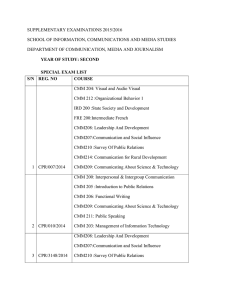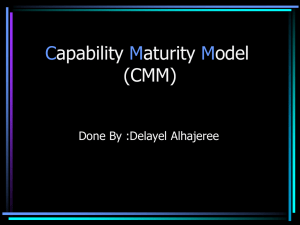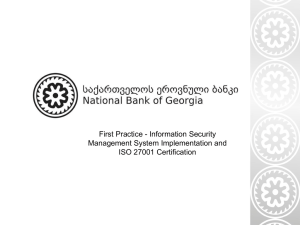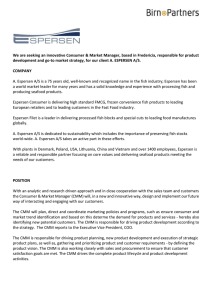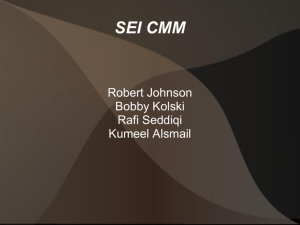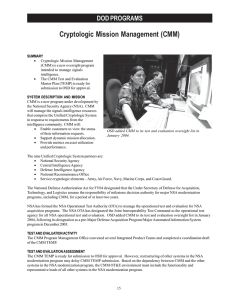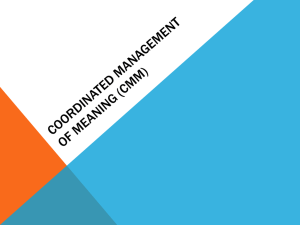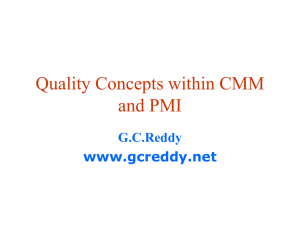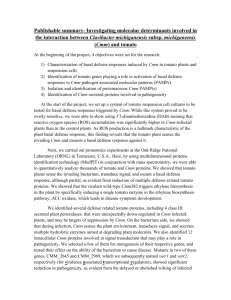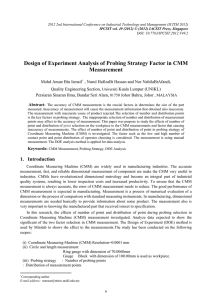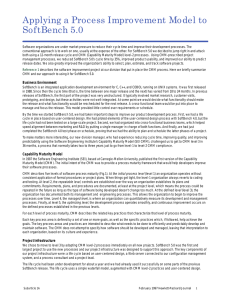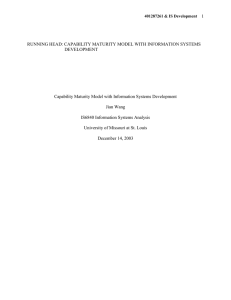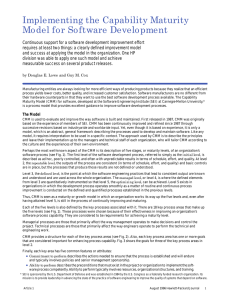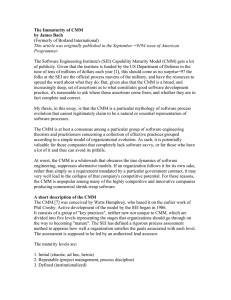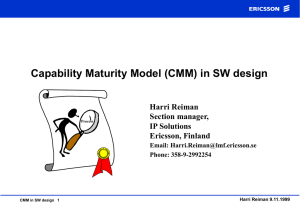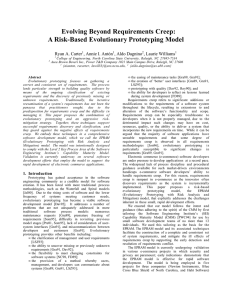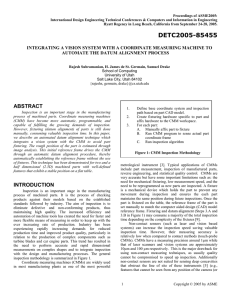Process Maturity Model
advertisement
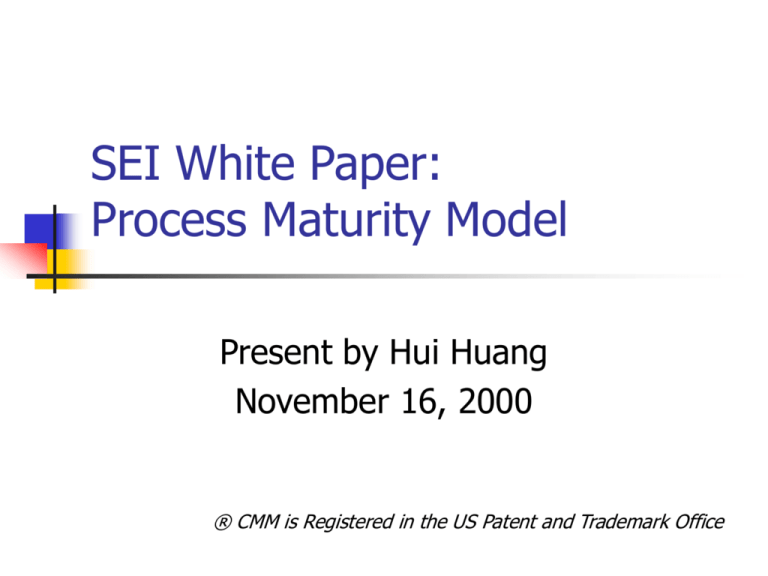
SEI White Paper: Process Maturity Model Present by Hui Huang November 16, 2000 ® CMM is Registered in the US Patent and Trademark Office Overview of the article (CMM for Software) Overview of CMM Background discussion: Why CMM is crucial Developing History Detailed Summary Description of Uses for Process Improvement Evaluation of software supplier Pros and Cons State of Practices and Future Directions Clarification of Terms Software process Software process capability Software process performance Expected results Actual results Software process maturity What is CMM ? A SEI Patent A Five-Level Hierarchical Model A set of known GMPs and an improvement strategy for building consistent and predictable software products Why CMM is crucial Determine the current process maturity level Identify a vital few issues Focus on limited set of activities Enable steady, continual and lasting gains Maturity Levels in CMM Maturity Focus Level 5 Optimizing Continue Process 4 Managed 3 Defined 2 Repeatable 1 Initial KPAs (e.g.) Change Management Improvement Product and Process Quality Management Quality Engineering Process & Product Engineering Organizational Support Project Management SCM, QA/QC Processes Competent People and heroics Key Process Areas (KPAs) Each KPA identifies a cluster of related activities that achieve a set of goals considered important for process capability The path of a key process may differ The IDEAL approach to using the CMM The five phase of the IDEAL approach I: Initiating (the groundwork) D: Diagnosing (the distance to the goal) E: Establishing ( the plan) A: Acting (doing the work) L: Learning (from the experience) CMM is part of the IDEAL approach Cons: CMM is Not comprehensive non-software disciplines are not addressed Counter-argument: CMM is deliberately focused on software process CMM is Difficult to Understand The solution is for Large organization The maturity levels oversimplifies issues The KPAs are static Pros Normative components are short: 18 KPAs and 52 Goals organized in hierarchical model CMM has been reviewed by many software developers and has many successful applications Training available from SEI and authorized distribution partners State of the Practices In 1989, 90% of the organization assessed are at level one and only 1 at level 5 In 1999, >70 of the organization assessed are at level 4 or 5 Commercial Users: 60% Government/Military Users: 40% Suggested Reading Paulk Mark et al. 1995 The Capability Maturity Model: Guidance for Improving the Software Process Questions ?
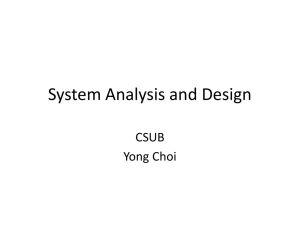
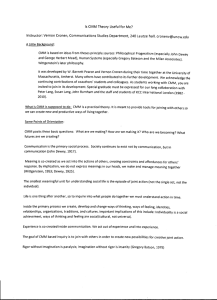
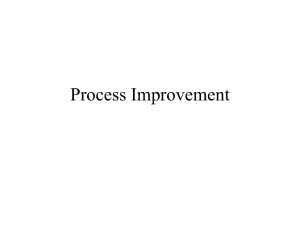
![Applying CMM to the World Around Us [ Coordinated Management of Meaning Theory]](http://s2.studylib.net/store/data/012010467_1-d2940c3fb45f516ffd9acdfa3cb2955d-300x300.png)
